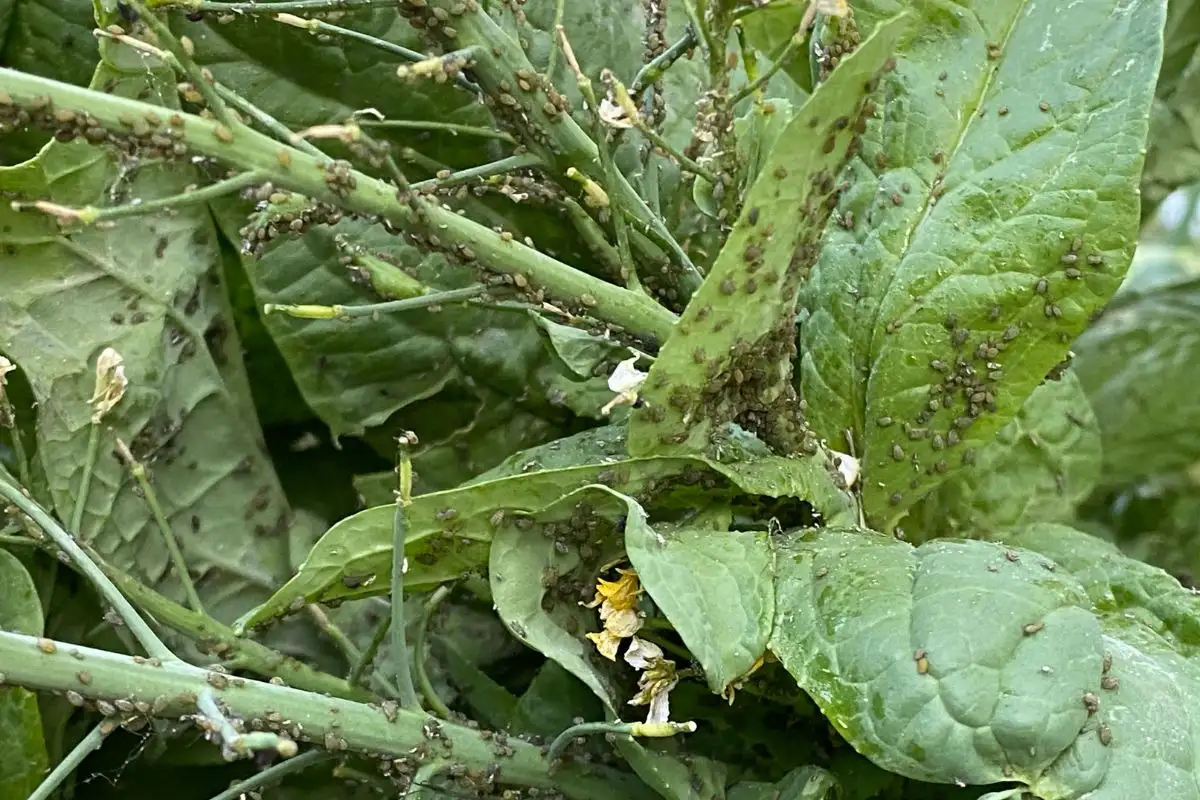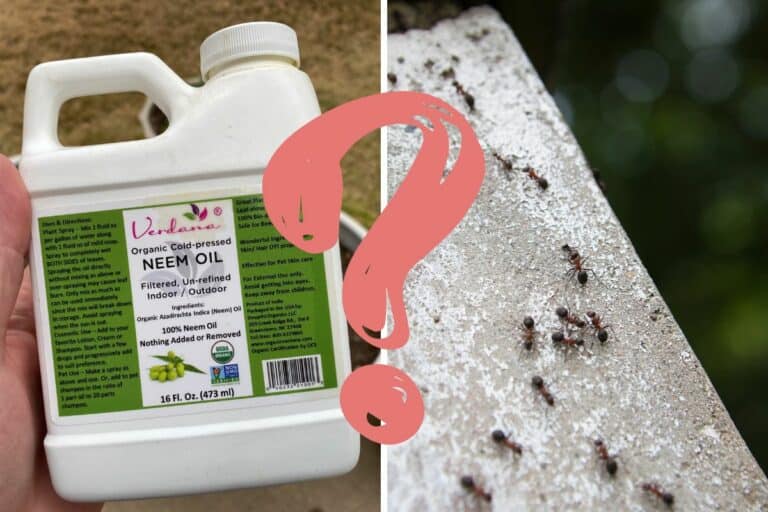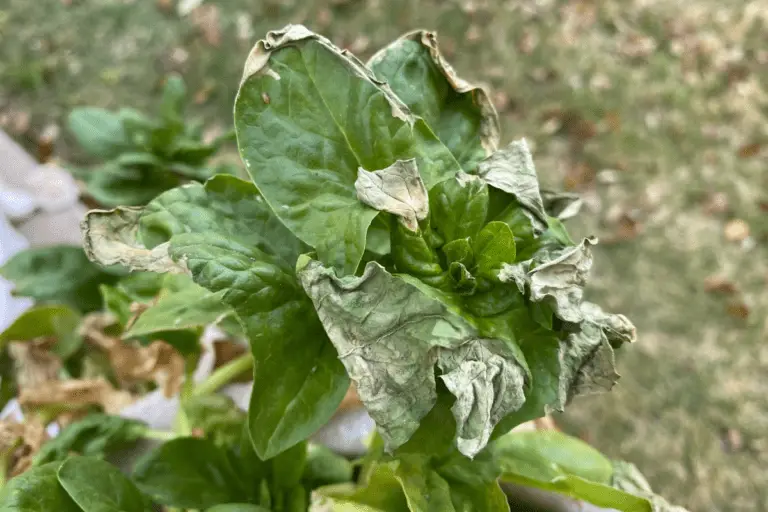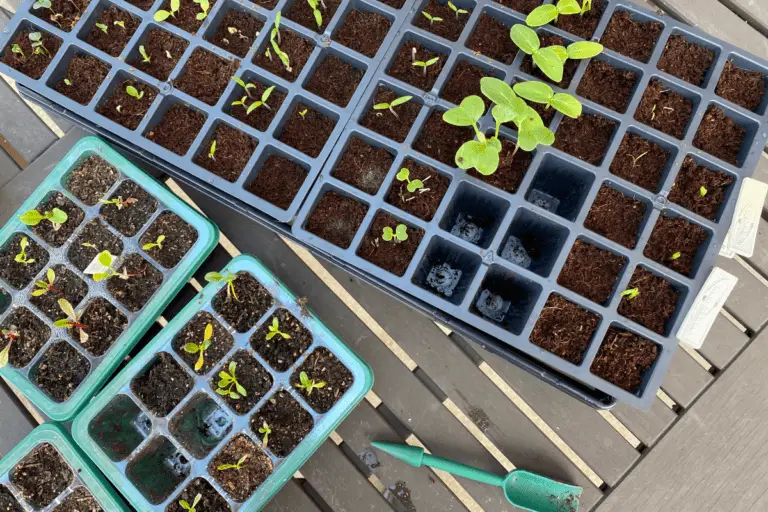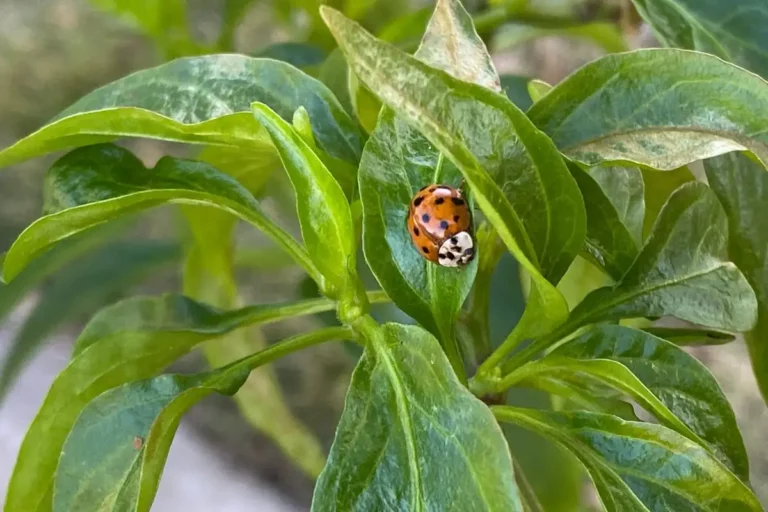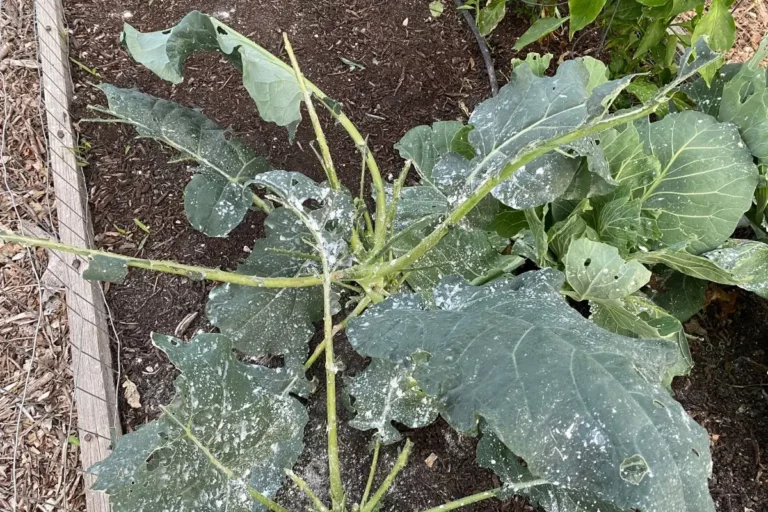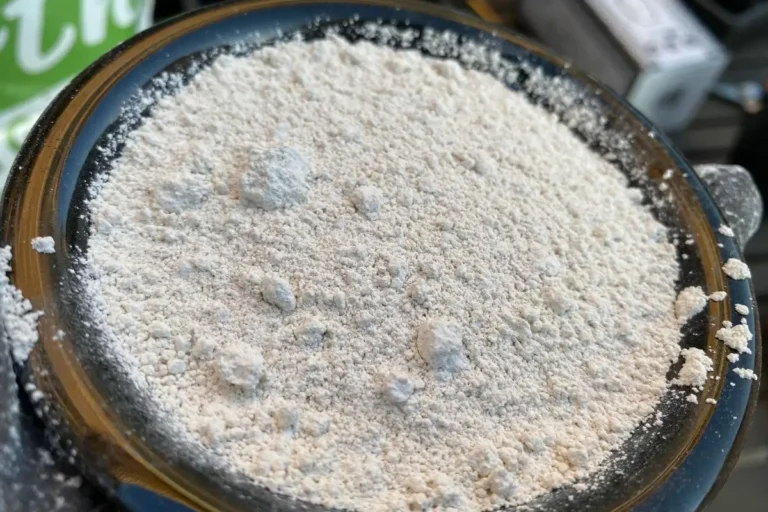Killing Aphids with Diatomaceous Earth: Is DE Effective?
Aphid infestations can wreak havoc on your garden if you don’t spot them in time or act quickly. These tiny insects breed rapidly and cause significant damage by sucking sap from plants, weakening them, and potentially spreading diseases.
That’s why diatomaceous earth (DE) can be a good option for gardeners interested in a natural solution. If used properly, DE can stop aphids in their tracks.
Diatomaceous earth will kill aphids if it’s sprayed directly on them or if they come into direct contact with it. DE is a naturally occurring sediment whose sharp, microscopic edges will easily lacerate aphid exoskeletons, absorbing any bodily moisture and causing them to dehydrate and die.
Because of its absorptive qualities and damaging siliceous makeup, DE can be an invaluable tool in your pest management toolbox.
This non-toxic, eco-friendly solution can safely protect your plants from numerous garden pests while causing minimal harm to beneficial insects (as long as you’re careful about when and how you apply it).
In the rest of this article, I’ll delve into:
- How to apply diatomaceous earth to combat aphids effectively
- Other popular, effective methods to kill aphids
- A list of garden pests that DE can eliminate
Before we get to the details, one quick note. If you’d like to do what I do in my backyard, you’ll need to pick up some food-grade diatomaceous earth and safety masks. You might even consider goggles and a high-quality bulb duster as well to minimize the chance of DE getting in your face, especially on windy days.
The last thing you want to do is inhale DE when some of it inevitably blows into the air!
How Do You Apply Diatomaceous Earth to Aphids?
Before you can figure out what’s going on in your garden, you must first become a seasoned plant detective.
Here’s what I mean: The more you teach yourself to see what’s going on in your garden, the quicker you’ll be able to respond when pests arrive.
I’ve been gardening for many years, and I know exactly what it looks like when aphids, armyworms, cabbage loopers, hornworms, or spider mites arrive (to name just a few nasty pests).
A good way to start the learning process is to conduct thorough inspections of your plants on a weekly basis for any signs of bad bugs.
For example, aphids love to hang out on the underside of leaves, so you should always check there first if you suspect you might have aphids in your garden. You might see lots of ants crawling around your beans, lettuce, okra, peppers, tomatoes, or other plants.
Those ants might be harmless. But they might also be working to help aphids—herding and protecting them and stealing the sweet honeydew droplets that they leave beyond.

While you’re on the hunt—and before you start using DE in your garden—be sure to keep your eyes open for beneficial bugs.
Many insects, such as ladybugs and lacewings, enjoy feasting on aphids, so you’ll want to avoid applying DE if you see helpful allies scattered among your plants.
Once you’ve scouted out your garden, found the aphids, and ensured there are no beneficial bugs around, it’s time to pull out the DE and get going.
Here’s what I consider before using DE in my backyard:
1. Timing is key when applying diatomaceous earth. Choose a calm day with no wind to prevent the powder from blowing away. Additionally, ensure there’s no rain forecast for at least 24 hours after application, as diatomaceous earth is effective only when dry.
2. Safety should be a priority. Always remember to don protective gear unless there’s absolutely no wind outside, including gloves, goggles, and a mask. At the very least, you should wear gloves since DE can be incredibly messy.
Diatomaceous earth, while non-toxic, can irritate your eyes and respiratory system if you inhale it or it blows in your face (which happened to me once when I applied DE right as a gust of wind blew across my yard!).
You can avoid my mistake by keeping yourself protected. You might as well err on the safe side!
3. Applying diatomaceous earth to your garden works best when done precisely. A high-quality bulb duster is my tool of choice since, unlike cheap plastic ones, good bulb dusters allow me to carefully spray DE in targeted ways.
Doing so will allow you to selectively apply the powder to the infested areas of your plants, targeting the aphids without wasting your DE or getting it on other plants.
Gently aim the nozzle, squeeze the bulb, and dust the leaves, focusing on the undersides where aphids tend to congregate. You’ll want to see a fine coating, not a thick layer.

4. Consistency is the key to fighting aphids. DE doesn’t have a residual effect, so reapplication is essential if your aphid problem continues.
If you’ve got a limited infestation, aim to dust your plants once a week to keep the aphid population at bay. However, after heavy rain or watering, you’ll always need to reapply once things have dired outside.
5. Consider other treatment methods like soapy water and neem oil sprays. Don’t forget, though, that DE isn’t your only weapon. And there are many times when the infestation has gotten out of hand, and DE is no longer your best option for fighting aphids.
You’ve got lots of tools at your disposal, including soapy water and neem oil, so be sure to assess the problem and use the best method possible.
For larger infestations—that is, when you’ve got 5+ plants infested with aphids—soapy water and neem oil are excellent treatments.
A daily spritzing of soapy water can deter aphids, and neem oil works to disrupt their life cycle. DE, soapy water, and neem oil, when used together, can form a powerful triple threat if you sense your aphid problem is getting out of control.
Long story short, when you integrate DE into a broader pest management strategy, you’ll stand a stronger chance of keeping those destructive aphids at bay, allowing your plants to flourish.
What’s the Best Thing to Use to Kill Aphids?
If you’re trying to figure out the best thing out there to kill aphids, I’d like to start with something a bit more theoretical, then get to the practical matters down below.
To begin with, the best weapons you’ve got against aphids are:
- Your ability to recognize aphids shortly after they’ve shown up in your garden.
- The willingness to respond quickly to aphid infestations instead of waiting days or weeks to tackle the problem.
When it comes to aphids, speed is of the essence. These minuscule pests breed at an astonishing pace and move from one plant to another, turning minor issues into major headaches overnight.
Once you’ve noticed aphids in your garden, I recommend a tiered approach to pest management, selecting your strategy based on the severity of the infestation.
1. Minor Infestations (1-4 plants)
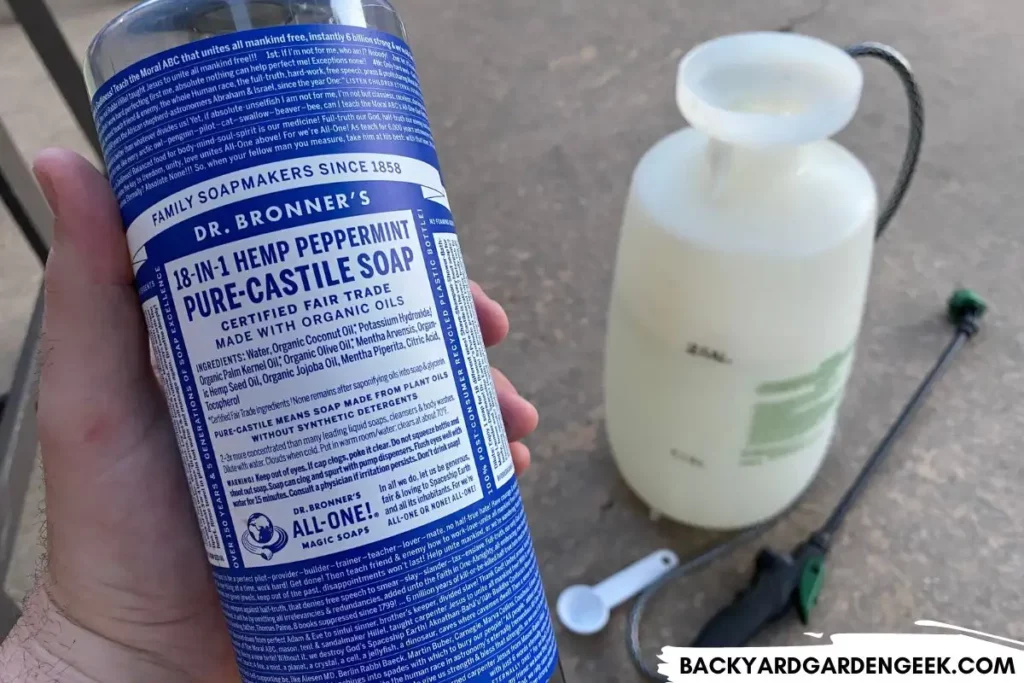
For minor aphid invasions, simplicity rules.
I recommend spraying your plants with a soapy water spraying once a day for 1-2 weeks. If you’re consistent, this approach can go a long way.
I like my soapy sprays to be strong, so I mix 5 tablespoons (74 ml) of Dr. Bronner’s Peppermint Castile Soap for every gallon of water. You can use less soapy, but I want my soapy water solutions to be powerful.
Target the areas where aphids congregate, particularly the undersides of leaves and spray your plants thoroughly.
Daily applications will knock some aphids off your plants and suffocate the rest. Just remember that consistency is key here. If you don’t keep at it, you won’t see results.
2. Moderate Infestations (5-9 plants)
If you didn’t catch the aphids early enough, you’ll likely find that they’ve taken over several plants and spread to others.
For moderate infestations, I keep up the soapy water sprays, but I also introduce neem oil into the mix.
This natural pesticide interferes with aphids’ feeding, growth, and reproduction, and unlike soapy water, it’ll work for several days after you spray it since the aphids will intake its chemical components as they feed on the plant.
If you introduce neem oil, simply substitute one of your soapy water spray days for a neem oil day, then wait 5-7 days before doing another neem application.
Just be sure to spray neem oil in the late afternoon or early evening, and always avoid applying neem oil in direct sunlight or high temperatures.
Neem oil is an oil, so it’ll burn your plants if you apply it earlier in the day, especially during the hot summer months.
If you’d like to learn more about how I’ve used neem oil in my garden, check out these related articles:
- 9 Reasons Your Neem Oil Might Not Be Working
- Can You Use Too Much Neem Oil on Plants?
- Diatomaceous Earth vs. Neem Oil: Which Should You Use?
- How Can I Make Neem Oil More Effective? My 10-Step Process
- How Long Does It Take for Neem Oil to Kill Bugs?
- How Long Does Neem Oil Last? A Complete Shelf Life Guide
- How to Wash Neem Oil Off Plants: 3 Steps + Things to Consider
3. Extreme Infestations (10+ plants)

When you’re facing extreme infestations—and the possibility that aphids are going to do some serious damage to your garden—you’ll need to bring out the big guns: diatomaceous earth + neem oil + soapy water.
DE will kill aphids by lacerating their bodies and causing dehydration. But continue your daily soapy water sprays and regular neem oil applications. Just make sure to apply DE when your plants are dry and never right before you spray them with soapy water or neem oil.
Together, these 3 methods form a robust defense against aphids, hitting them from all sides and keeping your plants safe.
If the infestation has truly gotten out of control, you might have to pull your plant and throw it out to ensure the aphids don’t reproduce and migrate to new parts of your garden.
Just be sure to put the plant in a plastic bag and seal it tight. If you don’t, the aphids will start searching for other nearby sources of food…and you don’t want that!
But by catching aphids early, staying vigilant, and responding quickly, you can prevent these pests from taking over your garden.
Be sure to stick with your preferred pest control method and stay consistent. If you do, you’ll keep your garden thriving and aphid-free.
What Insects Does Diatomaceous Earth Kill?
As we’ve seen, diatomaceous earth is a potent tool in your fight against aphids. But its use goes beyond aphids. In fact, it’ll kill off a wide variety of garden pests, making it a critical part of your pest control strategy.
The mode of action remains the same, irrespective of the pest. DE works mechanically, its sharp edges cutting into the bodies of insects, which leads to dehydration and ultimately death. This method is effective against a whole host of critters that might be eyeing up your garden as a snack.

Let’s take a look at the other garden pests that diatomaceous earth can help you combat:
| Garden Pests | Description |
|---|---|
| Ants | Ants can protect aphids from predators, promoting infestations. If you see ants, make sure there aren’t any aphids around! |
| Aphids | Aphids weaken plants by sucking out sap and spreading diseases. |
| Beetles | Beetles can cause extensive damage to leaves, flowers, and fruits. Some, like the hated cucumber beetle, can also spread diseases from plant to plant. |
| Flies | Flies are a nuisance, and DE can kill fly larvae by causing physical abrasions and dehydration. But I don’t typically use DE to combat flies. That’s just too messy! |
| Mealybugs | Mealybugs feed on plant juices and excrete a sticky honeydew, which can lead to sooty mold. DE works well against them. |
| Mosquitoes | Mosquitoes are not only annoying but can also transmit diseases. DE works on them, but as with flies, it’s not my preferred approach. |
| Nematodes | Some nematodes attack plant roots, stunting plant growth. I don’t recommend using DE on nematodes. There are better options out there! |
| Slugs | Slugs feed on plant leaves, stems, and roots, causing damage. DE doesn’t typically kill them, but it slows them down a bit. |
| Snails | Like slugs, snails feed on various plant parts and can cause extensive damage. And like slugs, DE won’t kill them, just slow them down. |
| Spider Mites | Spider mites damage plants by sucking cell contents from leaves. DE will work well against them, but I far prefer soapy water and neem oil since spider mites are microscopic, and I don’t want to cover my plants in DE. |
| Stink Bugs | Stink bugs can harm various fruits and vegetables by feeding on them. DE works best on younger, smaller stink bugs. |
| Wasps | Some wasps are garden helpers. Others are just nuisances. I don’t typically use DE on wasps since there are better options available. |
| Weevils | Weevils can harm plants, particularly those with grains or seeds. DE works well against them. |
| Whiteflies | Whiteflies can weaken plants by sucking juices and spreading diseases. DE works, although I tend to prefer using soapy water in conjunction with DE against these pests. |
As you can see, diatomaceous earth is much more than an aphid remedy. This simple, natural powder can keep your garden safe from a wide range of pests, allowing your plants to grow healthy and strong.
Just be careful when applying it because it’ll kill off beneficial bugs as well if you’re not careful.
If you’d like to learn more about this and other DE-related topics, check out these articles:
